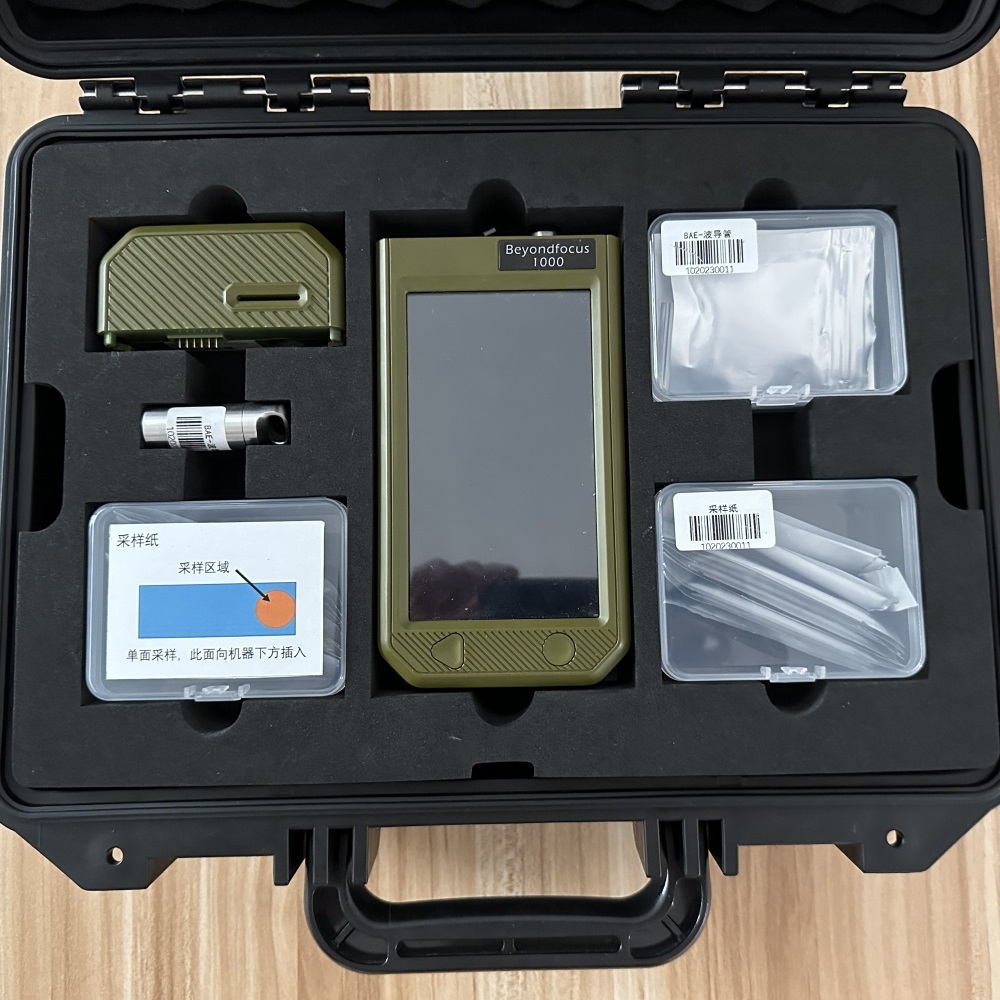When choosing a portable explosive trace detector (ETD), making the right decision is crucial for ensuring public safety and efficient security operations. Whether the device will be used in airports, military operations, law enforcement, or border control, selecting the best detector can significantly impact the effectiveness of security measures. Here are seven key tips to consider when choosing a portable explosive trace detector:
1. Understand the Detection Technology
Different ETDs use various detection methods, and the choice of technology plays a crucial role in the device’s performance. The most common detection technologies include:
- Ion Mobility Spectrometry (IMS): Widely used due to its sensitivity and quick detection capabilities, IMS-based detectors are popular for high-traffic security checkpoints like airports. IMS technology works by ionizing molecules and measuring how they move through an electric field, offering fast results, often within seconds. This technology is also relatively affordable compared to more advanced options.
- Mass Spectrometry (MS): This technology is more precise and accurate but comes at a higher cost. MS-based ETDs break down molecules into ions and analyze their mass-to-charge ratio, offering a detailed chemical fingerprint. It is excellent for forensic applications and high-stakes environments where accuracy is critical.
- Raman Spectroscopy: A non-invasive method that uses lasers to measure molecular vibrations, making it ideal for detecting explosives through transparent or opaque containers. Raman spectroscopy is often more expensive but effective for specialized applications.
Tip: Choose a detector based on the environment and specific security needs. For high-traffic areas, an IMS-based device may offer the best balance between speed and cost, while MS or Raman technologies are better for environments requiring higher accuracy.
2. Assess Sensitivity and Detection Range
The sensitivity of the device—its ability to detect even minute amounts of explosive material—is a key consideration. Modern ETDs can detect explosives at nanogram levels, which is crucial for identifying trace amounts of material that could still pose a threat.
- High sensitivity: Detectors with higher sensitivity can identify smaller traces of explosives. This is especially important in environments like airports, where even tiny particles of explosive material could be an indication of a more significant threat.
- Detection range: Different ETDs are optimized for different types of explosives, including military-grade, homemade, or commercial explosives. Ensure that the device can detect a wide range of explosives, including newer and less conventional ones like TATP (Triacetone Triperoxide) and HMTD (Hexamethylene Triperoxide Diamine), which are commonly used in homemade bombs.
Tip: Opt for a detector that balances high sensitivity with a broad detection range to ensure comprehensive coverage of both traditional and modern explosives.

3. Evaluate Portability and Weight
Since the primary function of these devices is to be portable, weight and ease of transport are critical considerations. Some detectors can weigh as little as 2-3 kg, making them easy to carry for extended periods, while others might be bulkier, which could limit mobility in certain operational settings.
- Portable and lightweight models are ideal for situations where mobility is critical, such as in the military or during mobile security operations.
- Ergonomic design: Ensure that the design of the device is comfortable for the user, especially if it will be used for long shifts or in field operations. Devices with good grip, adjustable straps, or lightweight casings will enhance user comfort.
Tip: Choose a device that offers the best combination of lightweight design and durability, particularly for mobile or field operations.
4. Battery Life and Power Efficiency
Battery life is a key consideration for ETDs, especially in situations where the device will be used for extended periods without access to a power source. Some detectors offer battery life of 4-6 hours or more, while others may need to be recharged or swapped more frequently.
- Extended battery life: Ideal for field operations, border control, or outdoor security checkpoints where access to charging stations may be limited.
- Rechargeable vs. replaceable batteries: Some ETDs come with rechargeable batteries, while others use replaceable batteries. Consider which option is more convenient for your operation.
Tip: Opt for a device with long battery life or easy-to-replace batteries, especially if it will be used in environments without consistent access to power.
5. Consider Durability and Environmental Resistance
Explosive trace detectors are often used in harsh environments, such as military zones, borders, or outdoor events, where they may be exposed to extreme temperatures, dust, moisture, and physical shocks.
- Rugged models are designed to withstand harsh conditions. These devices are usually dustproof, water-resistant, and shockproof, ensuring reliable performance even in tough environments.
- Operating temperature range: Ensure that the device can function in the temperature ranges typical of the environments where it will be used. Some detectors can operate in extreme heat or cold, which is essential for outdoor or military use.
Tip: Choose a rugged, durable detector that can withstand the environmental challenges of the locations where it will be deployed, especially if you expect extreme conditions.
6. Evaluate Speed and False Positive Rate
In high-traffic environments, such as airports or large public events, speed is essential. The best ETDs can deliver results in seconds, allowing for rapid screening of large numbers of people or items. However, speed must be balanced with accuracy—high false positive rates can cause delays and unnecessary security alerts.
- Fast detection: Look for devices that provide results in under 10 seconds, which is particularly useful in environments like airports, where screening efficiency is crucial.
- Low false positive rate: A device with a low false positive rate ensures that security alerts are accurate and only flag genuine threats, reducing unnecessary disruptions and secondary screening.
Tip: Choose a detector that offers fast analysis times while maintaining a low false positive rate to maximize both speed and accuracy.
7. Look at Cost and Maintenance
The price of an ETD can range from a few thousand dollars to tens of thousands, depending on the technology and features. However, the initial purchase price is not the only cost to consider. Maintenance, calibration, and consumables (like swabs or filters) can add significantly to the overall cost of ownership.
- Initial investment: Basic models typically range from $10,000 to $20,000, while high-end models with advanced technology (like MS or Raman) can cost upwards of $50,000 or more.
- Ongoing costs: Devices need regular maintenance and calibration to ensure continued accuracy. Consumables, such as sampling swabs, may also need frequent replacement, especially in high-traffic areas.
Tip: When choosing a detector, factor in the long-term costs of maintenance, calibration, and consumables, not just the initial purchase price. A higher-priced device with lower maintenance requirements may offer better value over time.
Choosing the right portable explosive trace detector requires careful consideration of several factors, including detection technology, sensitivity, portability, battery life, durability, speed, and cost. By focusing on these key features, you can ensure that the device meets your specific security needs, whether for airport screening, military use, law enforcement, or public event security. Always balance the cost with the performance features and operational requirements to make the best investment in public safety and security.
